Talk with our local travel specialist who can help organize your trip.
How To Plan Your Trekking In Nepal?
We are sure you’ve browsed through many websites of different trekking agencies, spent hours on the internet researching about the destination, reading detailed itineraries and probably searching for a hundred other things to plan and prepare for the trek or the tour. Many people are attracted with the idea of going to Nepal in order to walk the most popular trekking trails in the world.
When it comes to choosing a trekking agency, it gets really difficult and tricky because there are over a 2000 trekking agencies in the country. In order to help you find the right trekking agency, we have listed down some important tips to aid you choose the best travel agency in Nepal.
Most of the tours and trekking company in Nepal speak the green language of money. Trekkers are asked to pay huge sums of money for the trek and most of them end up paying whatever has been asked in hopes of good service throughout the trek.
In almost all cases, the trekking agencies do not walk the talk and the trekkers tend to have a miserable time in the mountains. Given the long list of trekking agency in Nepal, there are only a few that actually deliver what they promise and their clients go back home genuinely happy with the services provided.
Now, everybody is different and everyone has their own way of planning and dealing with the various tour and trek operators. In this blog, we are not trying to teach you how to deal with the various travel agencies in Nepal, Kathmandu. We want to help you by teaching you to ask the right questions to the travel agencies before you commit to a trek or tour with them. Asking the right question is very important as it sets a tone of authority with the travel agency.
Furthermore, it also helps to communicate your level of expectation from the tour or trek operator. They may not be able to answer each and every question that you throw at them but as a result, it will definitely help to ascertain how genuinely concerned they are.
Let us begin by learning to ask some basic questions and then we will move forward with the more detailed and difficult questions. With every topic put forward, we will also provide an answer which should be similar to the answers given by the travel agency/tour operator.
Table of Content
- The best season for trekking
- The difference between teahouse trekking and camping
- Teahouse accommodation
- Food In the teahouses during the trek
- Drinking Water During Trek
- Equipment and gear to consider for the trek
- Trekking Grade in Nepal
- Professional trekking Guide
- What is AMS and what happens if i get it during the trek
- Included and excluded from the total cost of the trek
- Do i need insurance to do the trekking in Nepal?
- How do we show respect to people, animals and the local culture?
The best season for trekking
This may be the most important question if you are planning to trek in Nepal. What is the best season for trekking in Nepal?
Well, Different seasons bring with it different trekking experiences in Nepal. Spring (March, April to Mid-May) is one of the best times to trek as spring brings with it good sunny weather and lot of flowers and plants also bloom during this time of the year.
Autumn (October to Mid-December) is another good season for trekking in Nepal. You may not find flowers blooming but be sure to find excellent weather to view mountains in all their grandeur during this season.
The difference between teahouse trekking and camping
If you’ve not trekked in Nepal, you probably don’t know the difference between tea house trekking and camping. Don’t forget to ask your travel agent to explain the difference in details.

Most of the popular trekking routes like Everest Base Camp Trek, Annapurna Base Camp and Annapurna Circuit Trek, Langtang Trekking, Manaslu Trek etc. have well-developed tea houses (mountain guest house) with good facilities of accommodation, food, bathroom and all the other basic amenities. In trekking routes with such teahouse facilities, trekkers stop for the night and stay in the teahouses which provide a warm bed and a variety of food.
Camping trekking, on the other hand, is all about carrying your own food and accommodation as you trek in the mountains. You will also have a team of porters, guides and assistant guides who will be cooking, putting up tents and help you with all the other tasks to make the trek as comfortable as possible. Camping is usually done, when you trek in remote routes like DOLPO region of Nepal.
Teahouse Accommodation
Nepal has various options when it comes to trekking and adventure activities. If you are planning to trek in Nepal, please do not forget to ask your travel agent as to what kind of accommodation you will be getting for the trek that you have chosen.
If you go for the tea house trekking in Nepal then you will get a basic room with two beds, mattresses, a bedsheet, pillow and a warm blanket. In higher altitudes, you may have to share the bathroom with a fellow trekker. If you are doing homestay treks, it all depends on what the hosts offer you. Sometimes, you may have to sleep on a mattress in the kitchen, other times; the host may provide a single room with a bed, mattress and a blanket. If it is camping, then you will have to sleep in a camp with a mattress and a sleeping bag.
Food In the teahouses during the trek
Most of the trekkers who come to Nepal for trekking have no idea about the kind of food you’ll get on your teahouse trekking. Since food is the most important thing along with water on the trek, you ought to be aware about the kind of food you’ll be getting in teahouses.
The popular trails in Nepal like the Everest Base Camp Trek, Annapurna, Manaslu, Langtang are all mostly teahouse trekking. Since the trekking trails are so popular, teahouses on the trail provide a varied array of dishes to the trekkers. Most of the teahouses provide hearty breakfast options of toasts, eggs, potatoes, as well as tea and coffee. In the Everest region, Sherpa stew is a popular choice among trekkers. Nearly every menu in any trekking region of Nepal has meat dumplings (MOMO) and noodles, which is very popular here in Nepal. However, the most popular perhaps is the traditional DAL BHAT. Lentil soup, rice, spinach, and seasonal vegetables along with ‘aachar’ or pickle as they call it in the west are the meal to go for while trekking. Not only is the Nepali Dal Bhat rich in carbs, but also helps in providing the necessary energy required to walk for 6 to 7 hours every day for 14 to 15 days on the trail. We even have a slogan in Nepal which goes like this- ‘DAL BHAT POWER, 24 HOURS’.
TIP: If you have any food allergies or if you want to avoid a particular ingredient from your food during the trek, it is best to inform your travel agent while booking the trek.
Featured Trips
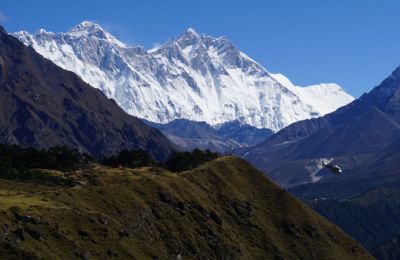
Everest Base Camp Trek - 14 days
Looking for an exciting Himalayan experience? Join us on our 14 day Everest Base Camp Trek - get ready to be stunned by breathtaking views and discover magical Nepalese cultures!
Inquire Now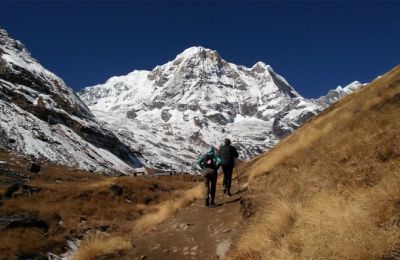
Annapurna Base Camp Trek - 11 days
Annapurna Base Camp Trek - 11 days takes you close to the world's 10th highest mountain, Annapurna I, Gurung culture, rhododendron forest, and terraced fields.
Inquire NowWhere to travel next?
Get help from our travel specialists for holiday ideas that matches your interests.
Drinking Water During Trek
For most of the foreign trekkers, the water found on the trail may not be suitable for drinking because most of the foreigners are used to drinking bottled water. The tea houses on the trail will provide bottled, boiled and filtered water. If you decide to drink the water provided by the teahouses, make sure to use iodine or other purifying agents to treat the water before drinking.
Most to the trekking agency in nepal usually don’t have water included in the nepal trekking packages so you have to buy bottled mineral water on the trail or drink the water provided by the teahouses. There are plenty of other sources for water, for example, the river, streams and waterfalls along the trail, but make sure to treat the water before drinking.
Equipment and gear to consider for the trek
A lot of novice trekkers have no clue about the gear to buy for their trekking adventure. Trust us, having the right gear will help boost your confidence during the trek not only that, the right gear will also make your life much easier in the mountains.
If you are clueless about what you need for the trek, please ask the trekking agent to prepare a list for you.
Most of the trekking trail in Nepal is similar to one another. Unlike camping trekking, teahouse trekking doesn’t demand a lot of equipment and gear from an average trekker. One really needs to be equipped with the right kind of clothes, shoes and other basic gear depending on the trail and the season he/she is trekking in. Click on the following: to know the list of what you should consider buying or hiring for tea house trekking in Nepal.
Trekking grades in Nepal
There are four categories when it comes to classifying the difficulty levels of the trekking trail. According to the physical and confidence level of the trekkers, they can choose a particular trek which suits them the most. Easy trekking could be suitable for all kinds of people but strenuous and difficult treks are for the experienced ones.
EASY TREK: As the name suggests, this is for people with no or very little experience or for somebody who is not looking for anything challenging. The treks that fall under the easy category usually take 2 to 5 days to complete and reach a maximum altitude of around 3000m. The trails are well maintained and it involves walking of around 5 hours a day.
MODERATE TREK: Moderate trek is for anyone who has time and wants to spend 1 or 2 weeks in the mountains. This level of trekking is for anyone who wants more than just a simple walk and is encouraged to have good level of fitness. The base camp treks like Annapurna Base Camp Trek, Langtang Helambu trek, Paanch Pokhari Trek all fall under the moderate level of trekking.
DIFFICULT TREK: Again as the name suggests, difficult trek is for people who have had the experience of easy and moderate level of trekking. This level of trekking requires you to walk for 6 to 7 hours on the trail every day and you could be reaching uncomfortable altitudes of around 5200m/ 17000ft. You may also have to walk on ice, cross glaciers and High Mountain passes. Recommended clothes and gear is required before attempting a difficult trek. Annapurna Circuit, Three passes Trek, Manaslu Circuit Trek are all difficult level of trekking in Nepal.
STRENUOUS TREK: Strenuous or challenging treks require you to have climbing skills as most of the trek is usually done at high altitude of above 5500 m to 6200m. The terrain that you will be walking in is unforgiving and situations can easily turn against you if you don’t have the right mindset. Along with technical mountain climbing knowledge, one also needs to have rope using skills. Strenuous treks test your climbing skills, fitness level and the sense of being in an isolated area without the hope of emergency rescue operation and help. Dhaulagiri Circuit Trekking, Amphu Lapcha Pass, Three Passes Trek are all examples of strenuous trek.
Professional trekking guide
The trekking guide is the most important person while on a trekking in nepal. Trekking Guide is responsible for everything, from your wellbeing to your food and accommodation. It’s important to ask as much questions as possible to both the trekking agent and the guide to get to know them better.
Most of the Nepal trekking company use a government certified professional trekking guide for most of the treks in Nepal. Depending on request, you can have a guide who speaks your language fluently. Most of the guides are fluent in English and are experienced trekking guides. Besides the government license, trekking guides are also equipped with profound knowledge about the wilderness, flora and fauna and safety measures.
TIP: It is always a wonderful idea to meet your guide a day before the trek starts and get to know him/her better.
What is AMS and what happens if i get it during the trek?
Acute mountain sickness or AMS is the negative health effect of being in high altitude. Rapid exposer to low amount of oxygen in places of high altitude results in AMS. Headaches, vomiting, dizziness, tiredness, trouble sleeping are all symptoms of AMS. AMS can quickly progress to HAPE-High Altitude Pulmonary Edema which is associated with the shortness of breath and HACE-High Altitude Cerebral Edema which is associated with confusion and hallucinations.
AMS usually occurs only above 2500m. Some may even show symptoms at lower altitude. It may happen due to high level of activity or rapid increase in elevation without proper acclimatization. If the symptoms are realized early, the best remedy for Acute Mountain Sickness is DESCEND, DESCEND and DESCEND some more.
Included and excluded from the total cost of the trek.
Most trekkers in the excitement of booking their trek usually forget to ask about what is included and excluded from the package deal. It is mandatory to ask your trekking agent to be very transparent about what is included and excluded from the package.
Trekking in Nepal costs a lot of money, especially if you are expecting the best service in the mountains, one really needs to have deep pockets. To be very honest, the kind of service you get in the mountains is directly proportionate to the amount of money that you spend while booking the trek. It is very important to know what is included and excluded from the total price of the trek before you embark on a long journey.
Example:
Third Rock Adventures offers two different packages for Everest Base Camp Trek; the first is the standard package and the other is the deluxe package. Click on the following link to see an example of what is included and excluded from our Everest Base Camp Trek
TIP: Always ask the travel agency to show you in writing, what is included and excluded from the price of the trek.
Featured Trips
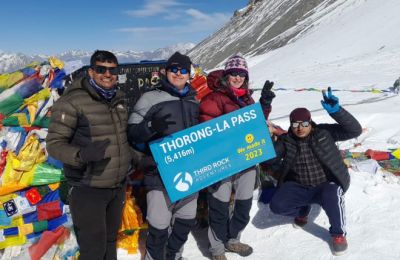
Annapurna Circuit Trek with Tilicho and Ice Lakes Trek - 14 days
Experience the thrill of Annapurna Circuit Trek with Tilicho and Ice lake and discover the beauty of the Himalayas! This trek takes you through beautiful landscape, diverse cultures and stunning views.
Inquire Now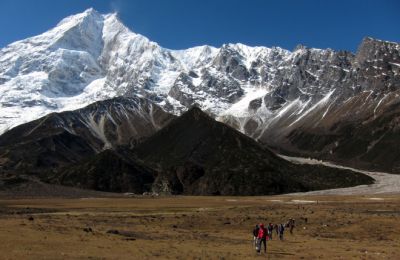
Manaslu Trek via Barpak and Laprak - 17 days
Manaslu Trek - 17 days is an off-beat trekking adventure with a fascinating cultural experience. Walk to the base of Manaslu, the eighth highest peak in the world.
Inquire NowWhere to travel next?
Get help from our travel specialists for holiday ideas that matches your interests.
Do i need insurance?
In order to trekking in Nepal, you must have insurance. For most of the treks in Nepal, you will reach staggering altitude of above 4000m. It is wise to have an insurance policy that covers medical and emergency rescues. Helicopter rescue and emergency evacuation is common in Nepal. It is a very wise to have an insurance policy that pays directly to the hospital, rather than you having to pay for it on the spot. All best trekking agencies in Nepal will definitely recommend you to have insurance before booking your trek.
How do we show respect to people, animals and the local culture?
Do you have any tips on what we should do and don’t? Yes, The people of Nepal are very friendly and humble by nature. We have a saying here ‘ATHITHI DEVO BHAWA’ which simply translates to guests are God. Although Nepalese are very friendly and warm hearted, there is a huge cultural difference between the west and the east. Here are some tips on how you can show respect towards the people and their culture:
- The first and the most important rule, when in doubt, do as a Nepali does!
- Avoid wearing revealing clothes and avoid displaying any kind of physical affection like kissing in the public place etc.
- Always remove your shoes while entering the temples, monasteries and the homes of the local people.
- Always ask for permission to take photographs. If they say no, respect that.
- Do not purchase any products or antiques made from protected animals or plants. It may land you in prison.
- Always say Namaste with a smile and your palms touching each other in front of your chest.
- Do not disturb or kill wildlife.
Now that you’ve read the entire blog, go ahead and confidently throw those questions to your travel agent. You can always cross check his/her answers with the details that we have mentioned in the blog. Trekking is definitely an expensive hobby; it is not easy preparing and planning for one especially for those who have just started but if you prepare well, find the right trekking agent, ask the right questions and gear up both physically and mentally, this experience might as well be a defining and life changing experience.
- Written by: Naba Raj Amgai
Updated: Feb, 2, 2021

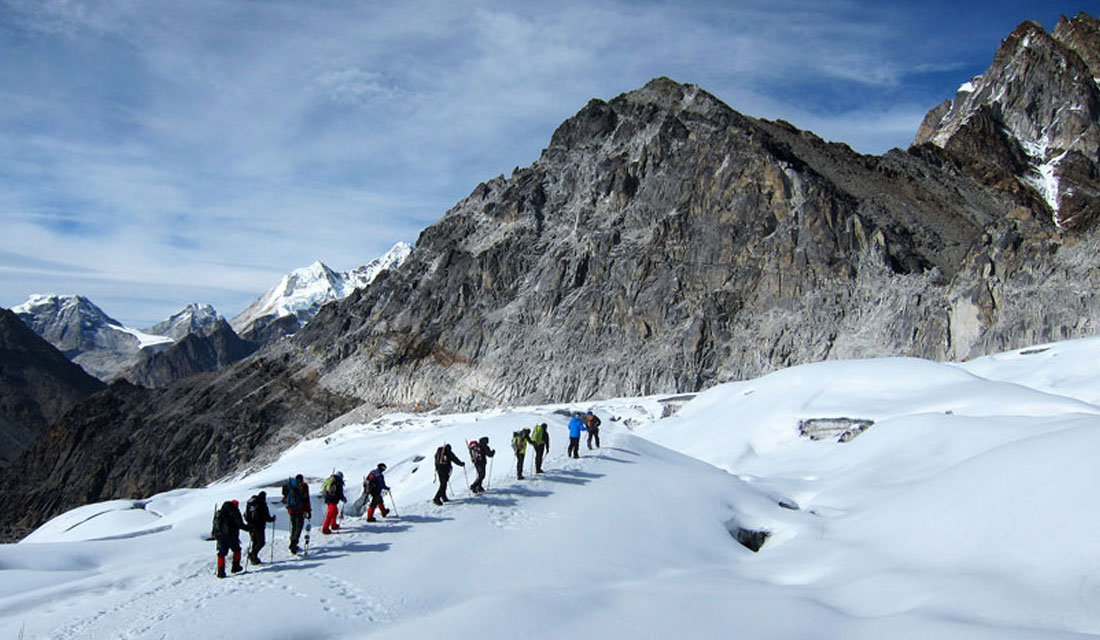

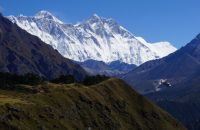
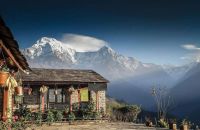
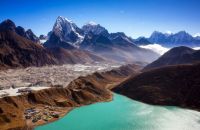
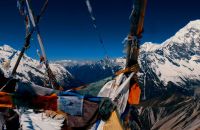
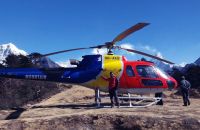
















Recent Comments